IC 2944, also known as the Running Chicken Nebula, the Lambda Centauri Nebula or the λ Centauri Nebula, is an open cluster with an associated emission nebula found in the constellation Centaurus, near the star λ Centauri. It features Bok globules, which are frequently a site of active star formation. However, no evidence for star formation has been found in any of the globules in IC 2944. Other designations for IC 2944 include RCW 62, G40 and G42.
The ESO Very Large Telescope image on the right is a close up of a set of Bok globules discovered in IC 2944 by astronomer A. David Thackeray in 1950. These globules are now known as Thackeray’s Globules. In 2MASS images, 6 stars are visible within the largest globule.
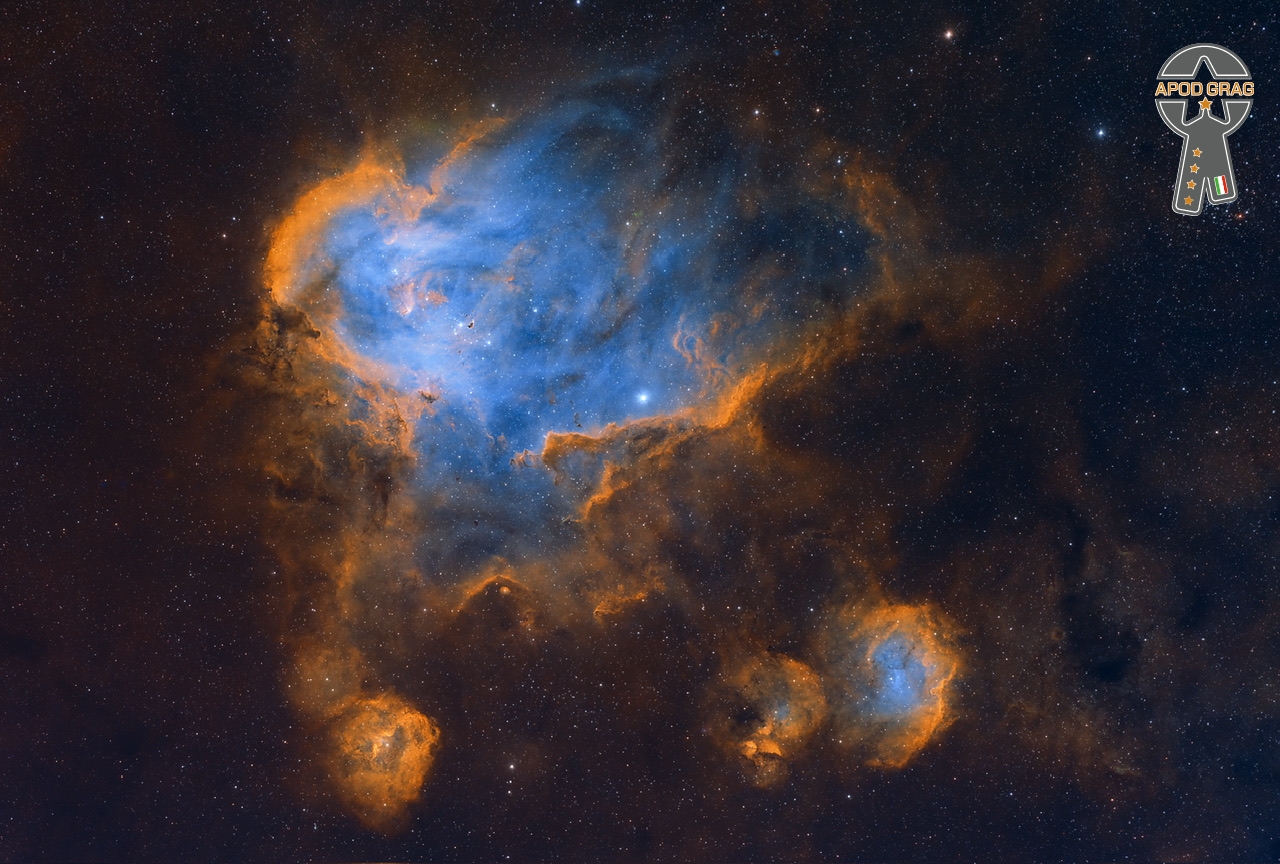
see full post...
Georges Bizet Alexandre César Léopold Bizet; 25 October 1838 – 3 June 1875) was a French composer of the Romantic era. Best known for his operas in a career cut short by his early death, Bizet achieved few successes before his final work, Carmen, which has become one of the most popular and frequently performed works in the entire opera repertoire.
During a brilliant student career at the Conservatoire de Paris, Bizet won many prizes, including the prestigious Prix de Rome in 1857. He was recognised as an outstanding pianist, though he chose not to capitalise on this skill and rarely performed in public. Returning to Paris after almost three years in Italy, he found that the main Parisian opera theatres preferred the established classical repertoire to the works of newcomers. His keyboard and orchestral compositions were likewise largely ignored; as a result, his career stalled, and he earned his living mainly by arranging and transcribing the music of others. Restless for success, he began many theatrical projects during the 1860s, most of which were abandoned. Neither of his two operas that reached the stage in this time—Les pêcheurs de perles and La jolie fille de Perth—were immediately successful.
After the Franco-Prussian War of 1870–1871, during which Bizet served in the National Guard, he had little success with his one-act opera Djamileh, though an orchestral suite derived from his incidental music to Alphonse Daudet‘s play L’Arlésienne was instantly popular. The production of his final opera, Carmen, was delayed because of fears that its themes of betrayal and murder would offend audiences. After its premiere on 3 March 1875, Bizet was convinced that the work was a failure; he died of a heart attack three months later, unaware that it would prove a spectacular and enduring success.
Bizet’s marriage to Geneviève Halévy was intermittently happy and produced one son. After his death, his work, apart from Carmen, was generally neglected. Manuscripts were given away or lost, and published versions of his works were frequently revised and adapted by other hands. He founded no school and had no obvious disciples or successors. After years of neglect, his works began to be performed more frequently in the 20th century. Later commentators have acclaimed him as a composer of brilliance and originality whose premature death was a significant loss to French musical theatre. For most of his life, Bizet had suffered from a recurrent throat complaint. A heavy smoker, he may have further undermined his health by overwork during the mid-1860s, when he toiled over publishers’ transcriptions for up to 16 hours a day. In 1868, he informed Galabert that he had been very ill with abscesses in the windpipe: “I suffered like a dog”. In 1871, and again in 1874, while completing Carmen, he had been disabled by severe bouts of what he described as “throat angina”, and suffered a further attack in late March 1875. At that time, depressed by the evident failure of Carmen, Bizet was slow to recover and fell ill again in May. At the end of the month, he went to his holiday home at Bougival and, feeling a little better, went for a swim in the Seine. On the next day, 1 June, he was afflicted by high fever and pain, which was followed by an apparent heart attack. He seemed temporarily to recover, but in the early hours of 3 June, his wedding anniversary, he suffered a fatal second attack. He was 36 years old.
see full post...James Edward Heath (October 25, 1926 – January 19, 2020), nicknamed Little Bird, was an American jazzsaxophonist, composer, arranger, and big band leader. He was the brother of bassist Percy Heath and drummer Albert Heath.
Heath was born in Philadelphia on October 25, 1926. His father, an auto mechanic, played the clarinet, performing on the weekends. His mother sang in a church choir. The family frequently played recordings of big band jazz groups around the house. Heath’s sister was a pianist, while his brothers were bassist Percy Heath (older) and drummer Albert Heath (his youngest sibling).
see full post...Eddie Lang (born Salvatore Massaro; October 25, 1902 – March 26, 1933) was an American musician who is credited as the father of jazz guitar. During the 1920s, he gave the guitar a prominence it previously lacked as a solo instrument, as part of a band or orchestra, and as accompaniment for vocalists. He recorded duets with guitarists Lonnie Johnson and Carl Kress and jazz violinist Joe Venuti, and played rhythm guitar in the Paul Whiteman Orchestra and was the favoured accompanist of Bing Crosby. The son of an Italian-American instrument maker, Lang was born in Philadelphia, Pennsylvania, and grew up with violinist Joe Venuti. His first instrument was violin when he was seven. He performed on violin in 1917 and became a member of a trio. In 1920, he dropped the violin for banjo and worked with Charlie Kerr, then Bert Estlow, Vic D’Ippolito, and Billy Lustig‘s Scranton Siren Orchestra. A few years later, he dropped the banjo for guitar when he became a member of the Mound City Blue Blowers led by Red McKenzie. He recorded one of the first solos in 1924 on “Deep 2nd Street Blues”. His performances with McKenzie’s band drew attention, and he found many jobs as a freelance guitarist. Before Lang, the guitar hadn’t been a prominent instrument in jazz bands and dance orchestras. Lang suffered from occasional laryngitis, chronic sore throat, and digestion problems. After a doctor recommended a tonsillectomy, Crosby urged Lang to have the operation. Assured that the operation was routine, Lang entered Park West Hospital in Manhattan, but he never awoke from the surgery. He died at the age of thirty in 1933. The cause of his death is uncertain.
see full post...An Israeli ensemble blending Arabic music. This is a cross-cultural peace collaboration
see full post...a cosmic bridge of stars, gas, and dust currently stretches over 75,000 light-years and joins them. The bridge itself is strong evidence that these two immense star systems have passed close to each other and experienced violent tides induced by mutual gravity. As further evidence, the face-on spiral galaxy on the right, also known as NGC 3808A, exhibits many young blue star clusters produced in a burst of star formation. The twisted edge-on spiral on the left (NGC 3808B) seems to be wrapped in the material bridging the galaxies and surrounded by a curious polar ring. Together, the system is known as Arp 87. While such interactions are drawn out over billions of years, repeated close passages will ultimately create one merged galaxy. Although this scenario does look unusual, galactic mergers are thought to be common, with Arp 87 representing a stage inthis inevitable process. The Arp 87 dancing pair are about 300 million light-years distant toward the constellation of the Lion (Leo). The prominent edge-on spiral galaxy at the far left appears to be a more distant background galaxy and not involved in the on-going merger.
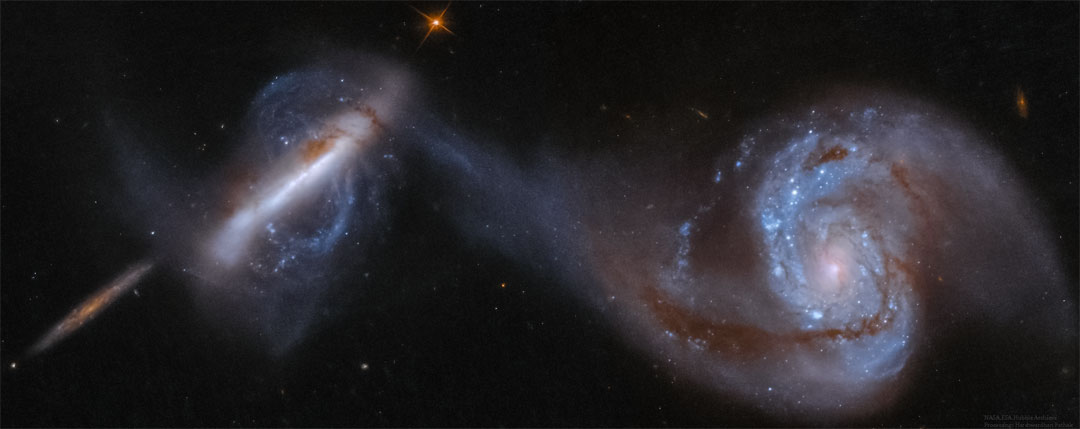
Odean Pope (born October 24, 1938) is an American jazz tenor saxophonist. Pope was raised in Philadelphia, where he learned from Ray Bryant while young. Early in his career, at Philadelphia’s Uptown Theater, Pope played behind a number of noted rhythm and blues artists including James Brown, Marvin Gaye and Stevie Wonder.
see full post...Willie James Mabon (October 24, 1925 – April 19, 1985) was an American R&B singer, songwriter, pianist, and harmonica player. He had two number one hits on the Billboard R&B chart, “I Don’t Know” in 1952 and “I’m Mad” in 1953.
Mabon was born and brought up in the Hollywood district of Memphis, Tennessee. He moved to Chicago in 1942, by which time he had become known as a singer and pianist. He formed a group, the Blues Rockers, and in 1949 began recording for Aristocrat Records and then Chess Records.
see full post...Saunders Terrell (October 24, 1911 – March 11, 1986), known as Sonny Terry, was an American Piedmont blues and folk musician, who was known for his energetic blues harmonica style, which frequently included vocal whoops and hollers and occasionally imitations of trains and fox hunts.
Terry was born in Greensboro, Georgia. His father, a farmer, taught him to play basic blues harp as a youth. He sustained injuries to his eyes and went blind by the time he was 16, which prevented him from doing farm work, and was forced to play music in order to earn a living. Terry played “Campdown Races” to the plow horses which improved the efficiency of farming in the area. He began playing blues in Shelby, North Carolina. After his father died, he began playing with Piedmont blues–style guitarist Blind Boy Fuller.When Fuller died in 1941, Terry established a long-standing musical relationship with Brownie McGhee, and they recorded numerous songs together. The duo became well known among white audiences during the folk music revival of the 1950s and 1960s, including for collaborations with Styve Homnick, Woody Guthrie and Moses Asch, producing classic recordings for Folkways Records (now Smithsonian/Folkways).
see full post...
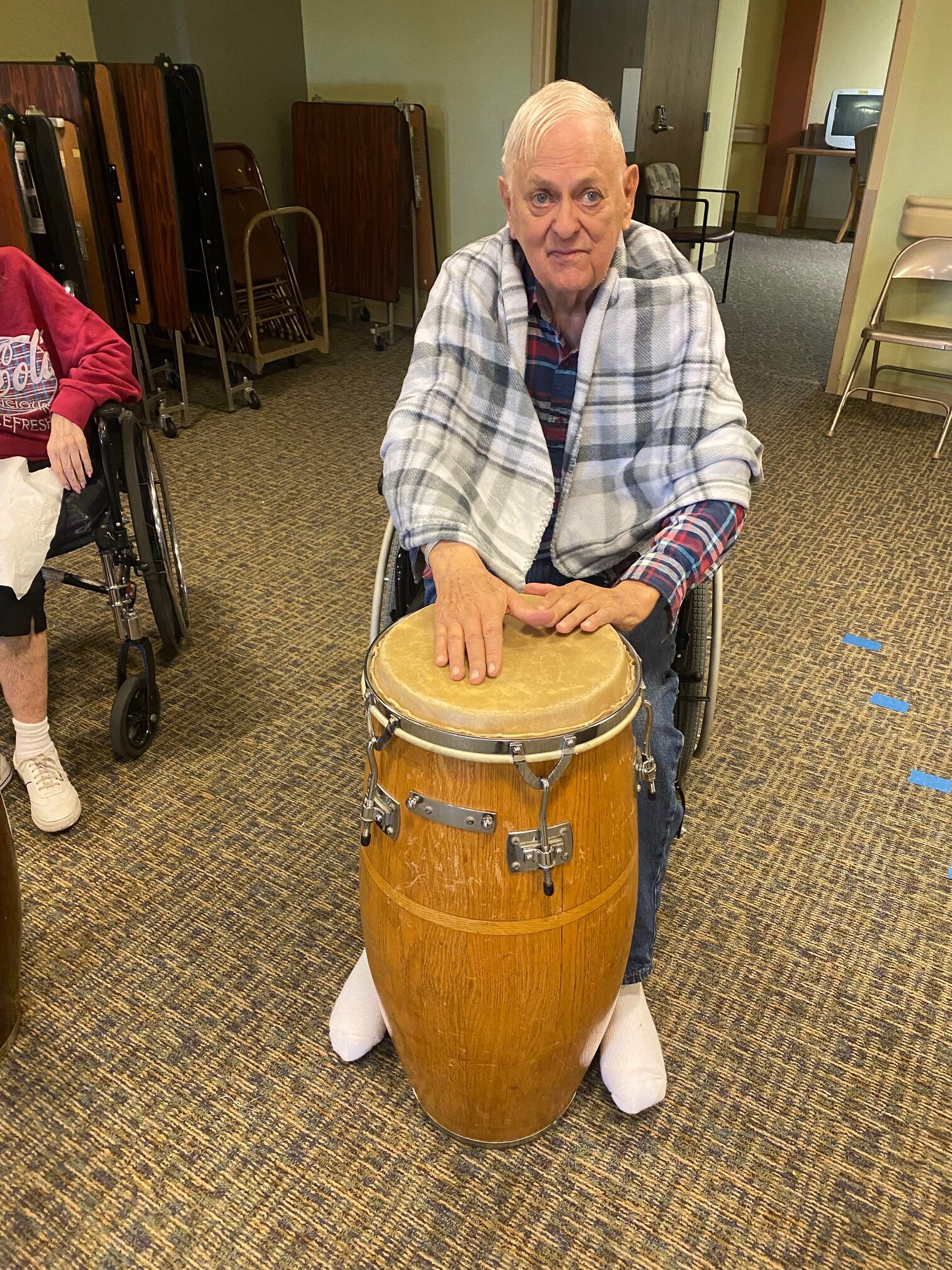

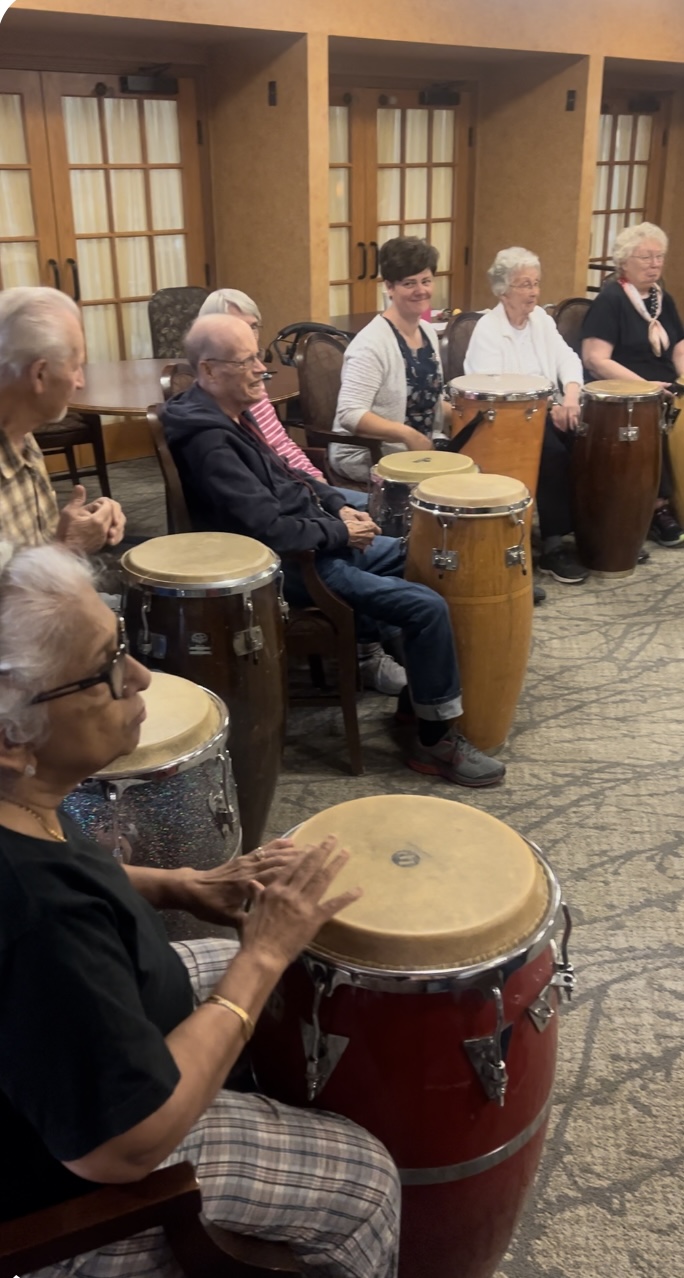
This striking image captures the interacting galaxy pair known as Arp-Madore 2339-661, so named because they belong to the Arp-Madore catalogue of peculiar galaxies. However, this particular peculiarity might be even odder than first meets the eye, as there are in fact three galaxies interacting here, not just two. The two clearly defined galaxies are NGC 7733 (smaller, lower right) and NGC 7734 (larger, upper left). The third galaxy is currently referred to as NGC 7733N, and can actually be spotted in this picture if you look carefully at the upper arm of NGC 7733, where there is a visually notable knot-like structure, glowing with a different colour to the arm and obscured by dark dust. This could easily pass as part of NGC 7733, but analysis of the velocities (speed, but also considering direction) involved in the galaxy shows that this knot has a considerable additional redshift, meaning that it is very likely its own entity and not part of NGC 7733. This is actually one of the many challenges that observational astronomers face: working out whether an astronomical object really is just one, or one lying in front of another as seen from Earth’s perspective! All three galaxies lie quite close to each other, roughly 500 million light-years from Earth in the constellation Tucana, and, as this image shows, they are interacting gravitationally with one another. In fact, some science literature refers to them as a ‘merging group’, meaning that they are on a course to ultimately become a single entity. [Image Description: Two spiral galaxies. Each glows brightly in the centre, where a bar stretches from side to side. The upper one is more round and its arms form two thin rings. The lower galaxy is flatter and its arms make one outer ring; a dusty knot atop its upper arm marks out a third object. Gravity is pulling gas and dust together where the galaxies come close. A number of small galaxies surround them on a black background.]
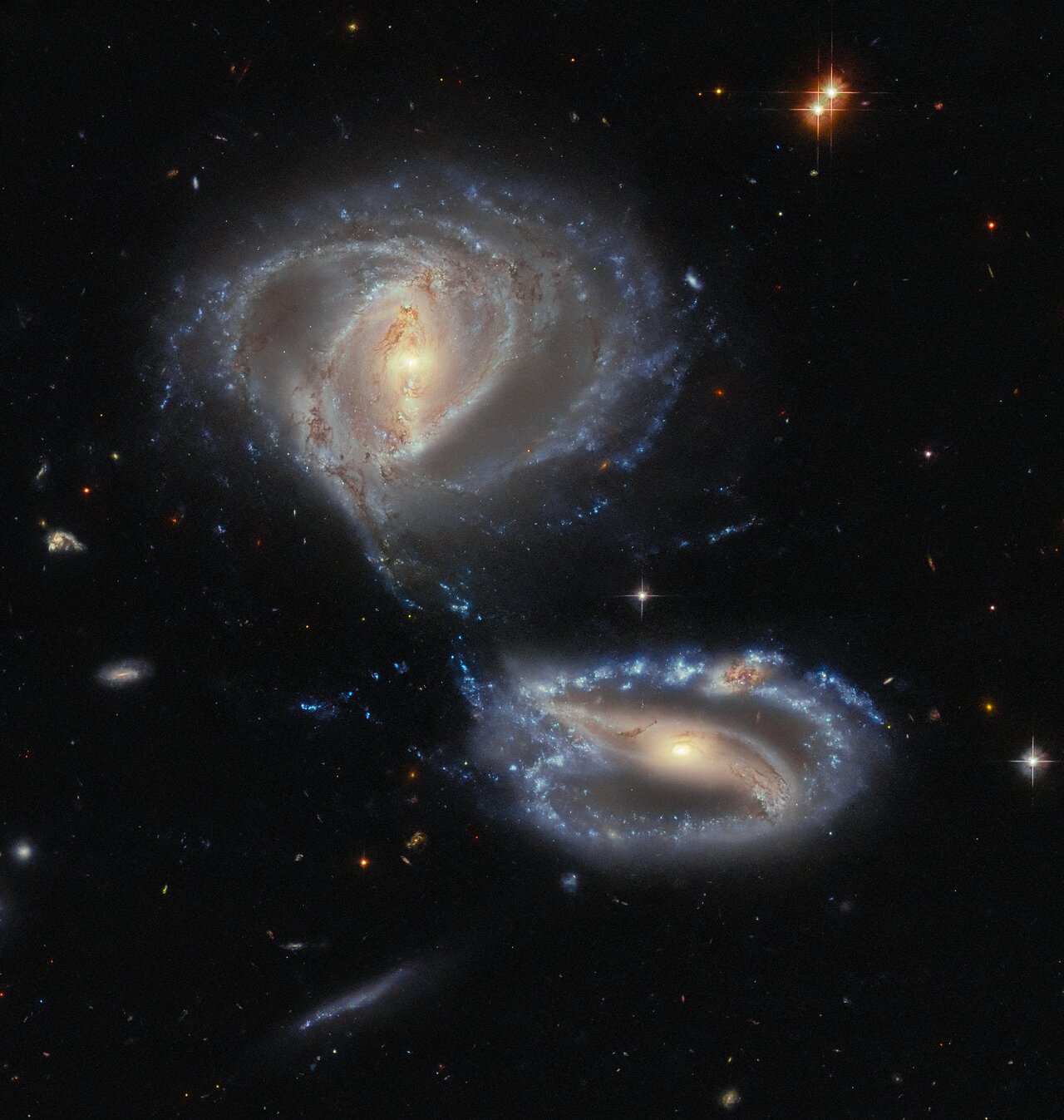
Ernest James Watts (born October 23, 1945) is an American jazz and rhythm and blues saxophonist who plays soprano, alto, and tenor saxophone. He has worked with Charlie Haden‘s Quartet West and toured with the Rolling Stones. On Frank Zappa‘s album The Grand Wazoo he played the “Mystery Horn”, a straight-necked C melody saxophone. He played the notable saxophone riff on “The One You Love” by Glenn Frey. Watts was born in Norfolk, Virginia, and began playing saxophone at thirteen. After a brief period at West Chester University, he attended the Berklee College of Music on a Down Beat magazine scholarship. He toured with Buddy Rich in the late-1960s, occupying one of the alto saxophone chairs. He visited Africa on a U.S. State Department tour with Oliver Nelson‘s group. For twenty years he played alto saxophone with The Tonight Show Band under Doc Severinsen. He was a featured soloist on many of Marvin Gaye‘s albums on Motown during the 1970s, as well as on many other pop and R&B sessions during his twenty-five years as a studio musician in Los Angeles. He has won two Grammy Awards as an instrumentalist.
https://www.youtube.com/watch?v=THmLkXB9Glk
see full post...Frank Hewitt (October 23, 1935 – September 5, 2002) was an American hard bop jazz pianist.
Born in Queens, New York, Hewitt lived most of his life in Harlem. His mother was a church pianist, and he initially studied classical and gospel music, but switched to jazz after hearing a Charlie Parker record. He took the bop pianists Thelonious Monk, Bud Powell and Elmo Hope as his role models. In the 1950s and 1960s, he worked with Howard McGhee, Cecil Payne, John Coltrane, Dinah Washington and Billie Holiday, among others; in 1961, he also participated in the Living Theater‘s production of Jack Gelber‘s The Connection. He became a regular figure in the circle of the pianist Barry Harris. In the 1990s, Hewitt became a central figure at New York’s Smalls Jazz Club; aside from playing there several nights a week, he sometimes also ended up using the walk-in refrigerator as a place to bunk when times were rough.
see full post...William “Sonny” Criss (23 October 1927 – 19 November 1977) was an American jazz musician.
An alto saxophonist of prominence during the bebop era of jazz, he was one of many players influenced by Charlie Parker.
William Criss was born in Memphis, Tennessee, United States, and moved to Los Angeles at the age of 15. He then went on to play in various bands including Howard McGhee‘s, which also featured Charlie Parker.
Criss had developed his own, concise, bluesy tone by this point, and though his basic style did not vary much, his ability on the instrument continued to develop. Nevertheless, he continued to drift from band to band, and played on some records with Johnny Otis and Billy Eckstine.
see full post...